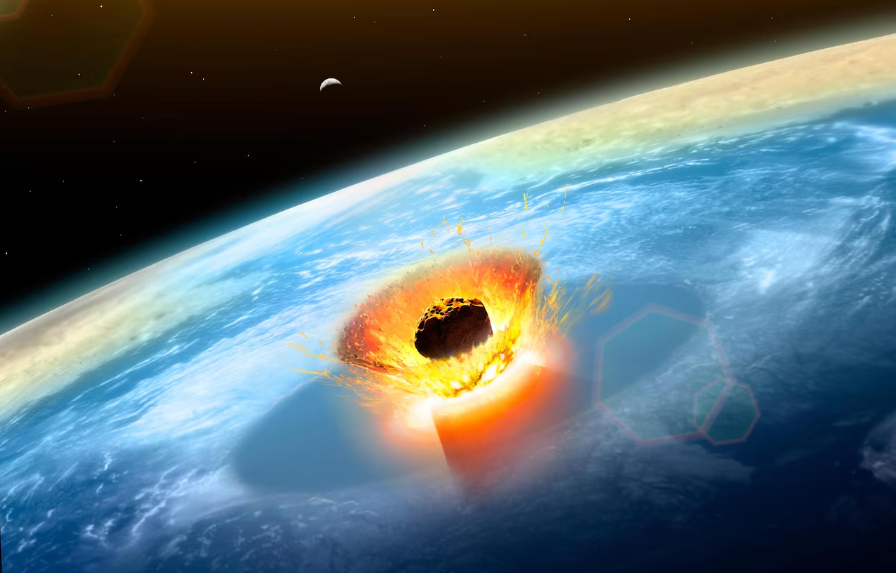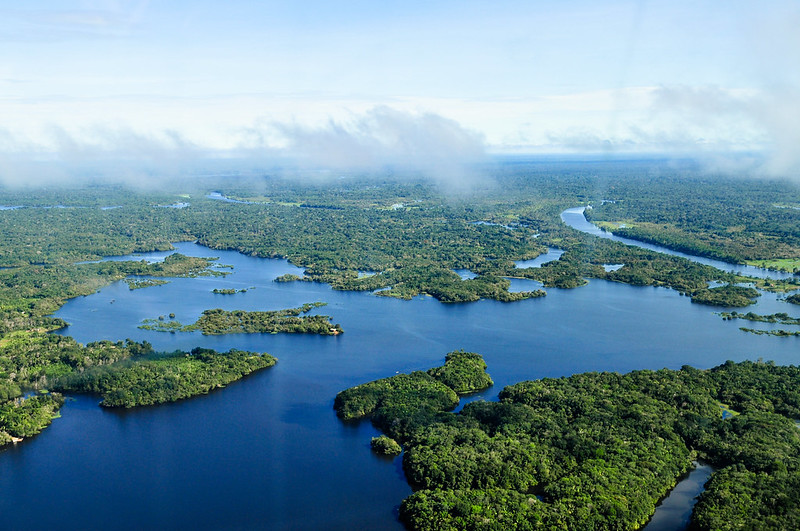Over sixty-six million years ago, an asteroid hit just off the coast of what is now the Yucatán Peninsula in Chicxulub, Mexico.
The rock, roughly the size of Mount Everest, hurtled toward Earth, traveling 15.5 miles per second (25 kilometers per second), according to NASA. The asteroid was likely between 6 and 9 miles (9.7 and 14.5 kilometers) in diameter. Its colossal size is largely why it disappeared. All the kinetic energy was converted into heat, and when it hit Earth, it exploded more and vaporized. The impact created a cloud of dust composed of the asteroid itself and the rock it landed on. The dust spread worldwide, blotting out sunlight and lowering temperatures for years, resulting in mass extinction. As for the asteroid, there’s nothing left except the chemical trace that was deposited all over the globe. This forms a tiny clay layer you can recognize everywhere in the world.The collision resulted in the extinction of about 75% of plant and animal species, including most dinosaurs except for birds.
Impacts on the size of Chicxulub only happen every 100 – 500 million years. There is still a chance of Earth-crossing paths with another asteroid or giant meteorite, so scientists say it’s good to know the physical and chemical properties of these objects to protect ourselves from a collision with a large space rock.
The low-light environment caused by the impact helped the spread of fungi that fed on organic matter, which was abundant at the time as plants and animals were dying in droves.
Using statistical analysis and gravitational simulations, scientists say that a significant fraction of a type of comet originating from the Oort cloud, a sphere of debris at the edge of the solar system, was bumped off-course by Jupiter’s gravitational field during its orbit and sent close to the sun, whose tidal force broke apart pieces of the rock. That increases the rate of comets like Chicxulub (pronounced Chicks-uh-lub) because these fragments cross the Earth’s orbit and hit the planet once every 250 to 730 million years.
RELATED STORIES
https://science.nasa.gov/earth/deep-impact-and-the-mass-extinction-of-species-65-million-years-ago/
https://phys.org/news/2024-10-asteroid-dinosaurs-ant-agriculture.html
https://www.cnn.com/2024/08/16/science/chicxulub-asteroid-impact-dinosaur-extinction/index.html
https://www.space.com/19681-dinosaur-killing-asteroid-chicxulub-crater.html
https://www.nsf.gov/news/news_summ.jsp?cntn_id=114648&org=NSF
TAKE ACTION
https://www.nasa.gov/starport/starport-donations/






